Can an artist be both fiercely determined and at the same time other-worldly? Olga Teksheva most certainly can.
It’s no surprise that Olga creates artwork with a sense of pure freedom and fantasy. Heralding from a background of six ethnicities and four religions, she grew up instilled with the ability to navigate a broad range of realities and cultures – experiences that have encouraged her unique ideas.
Her one-of-a-kind artwork ranges from multi-layered wall sculptures to textile and fibre installations. And her materials are just as diverse. Olga is as enchanted by a vintage scrap of lace as by an odd length of used fishing rope. To her, it’s all inspiration waiting to happen. No wonder her pieces embody a playful fairy tale quality that captivates her audience.
Born in Moscow and now living in Rome, she delights in the rich choice of materials readily available to her in the Eternal City. So much so, that Olga has developed a fascination with the artefact: a precious art object made up of layers of textile collage, and often incorporating hand embroidery, crochet and weave.
Her artworks, she tells us, come with an invitation to touch. And we’re in no doubt that her installations transform the space they occupy, creating a fairytale scene for grown-ups, transporting them to a new dimension.
Take a look at Olga’s magical worlds of discovery, crafted from her own heart, mind and hands.
Tactile therapy
Olga Teksheva: What attracts me to textile art is its connection to reality, and to the sense of touch. Working with threads and textiles anchors me to this world and somehow gives me calm and security.
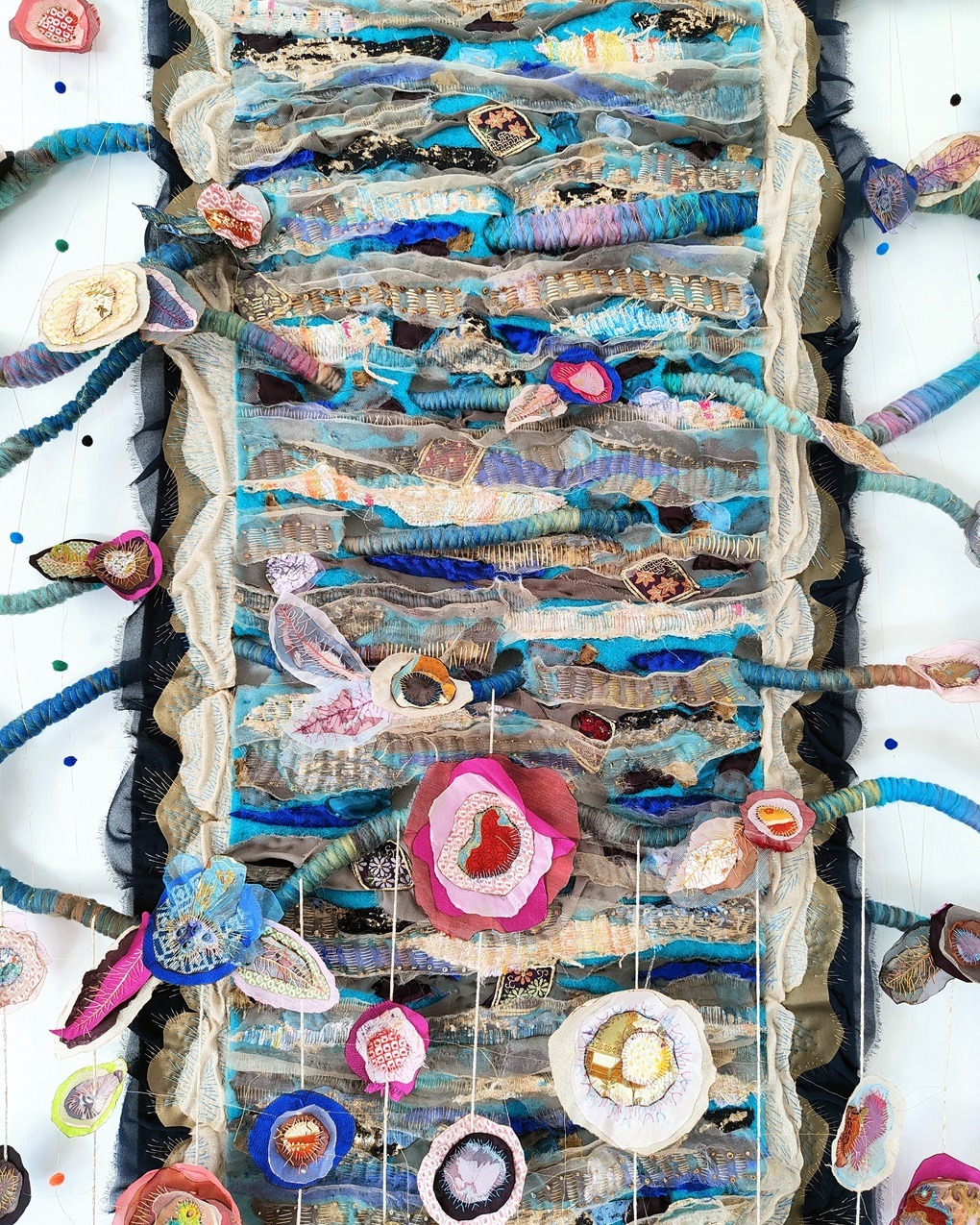
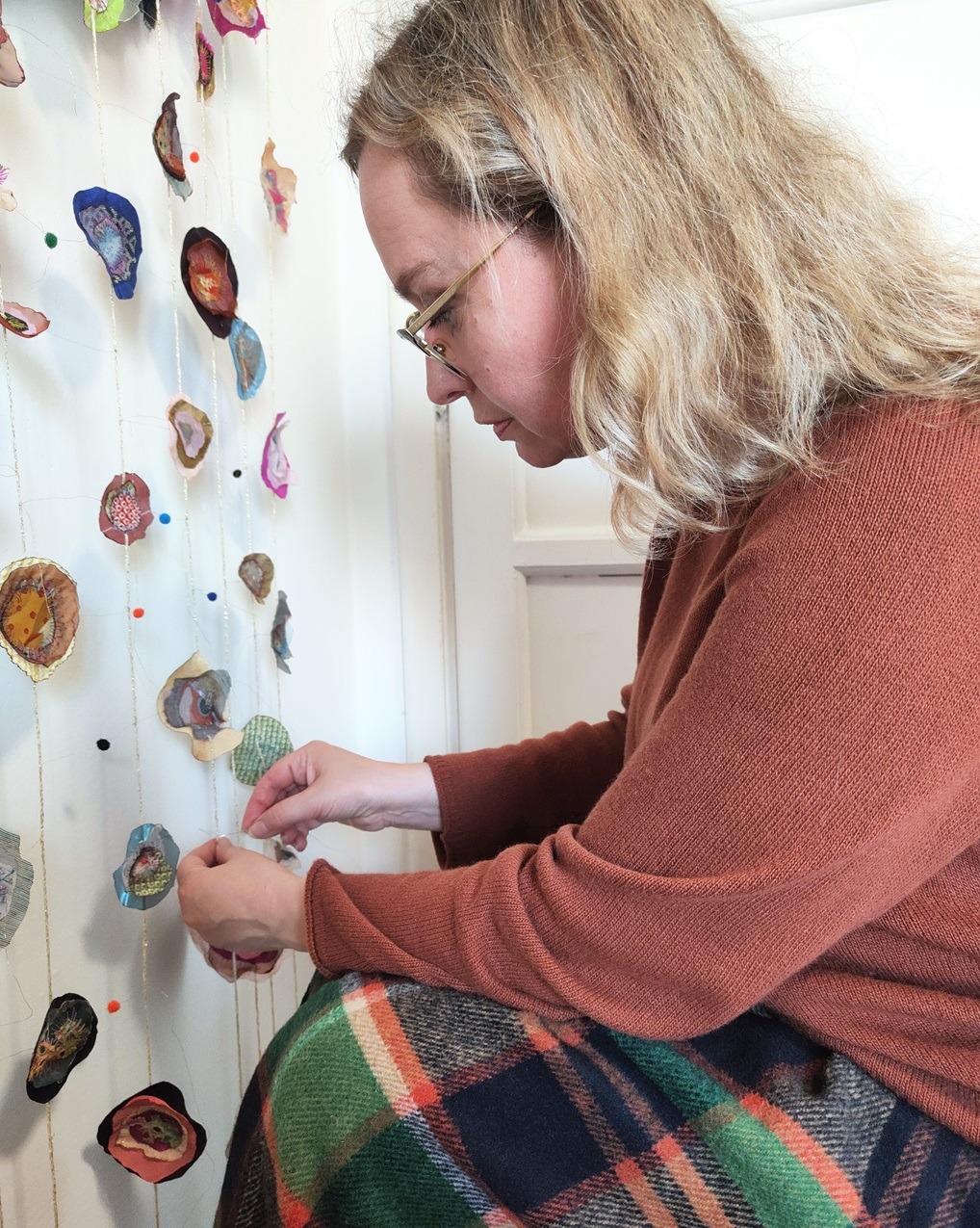
Changing career
I worked in fashion from 1993 to 2015, first as a fashion journalist, then, after graduating in fashion design in Italy, as an assistant to the director of an haute couture atelier in Rome. Later, I collaborated as a textile designer with various designers and brands. I was absolutely in love with the fashion of the 1990s. It was creative, often very experimental and intellectual, a real form of art.
“The more I worked on different projects, the more it became clear that I prefer to practise crafting things – to embroider, to crochet, to drape – than to simply draw clothes for fashion brands.”
After my fashion and costume design course, I started to study traditional embroidery – techniques like beading with satin ribbons. Later, I took different courses in crochet and knitting, learning various traditional techniques, though I didn’t want my own work to be traditional. I prefer to experiment with materials and measurements.
For example, the trees in the Once Upon a Time There Was a Fish Sitting on a Tree installation are crocheted with a giant hook, but the material I used is light fibres. The cocoons for the Hidden Treasures installation are crocheted in quite a traditional way, but the fibres are various coloured fishing threads. Here in Italy it’s a paradise for textile artists, since it’s so rich in textile manipulation traditions and high quality materials.
I spent a period doing pure research, asking questions like ‘What happens if I crochet a thick rope?’and ‘What if I make an irregular and gigantic cross-stitch?’. Then one day a friend told me it all looked like contemporary art, rather than haute couture.
At that time I discovered TextileArtist.org, containing fascinating interviews with international artists. It was so inspiring and was the turning point that convinced me to dedicate myself to textile art. My work as a textile artist today is thanks to the endeavours of this website!
“I realised that this was the perfect arena for my work, involving so much reflection, research, creativity and resulting in pure contemporary art.”
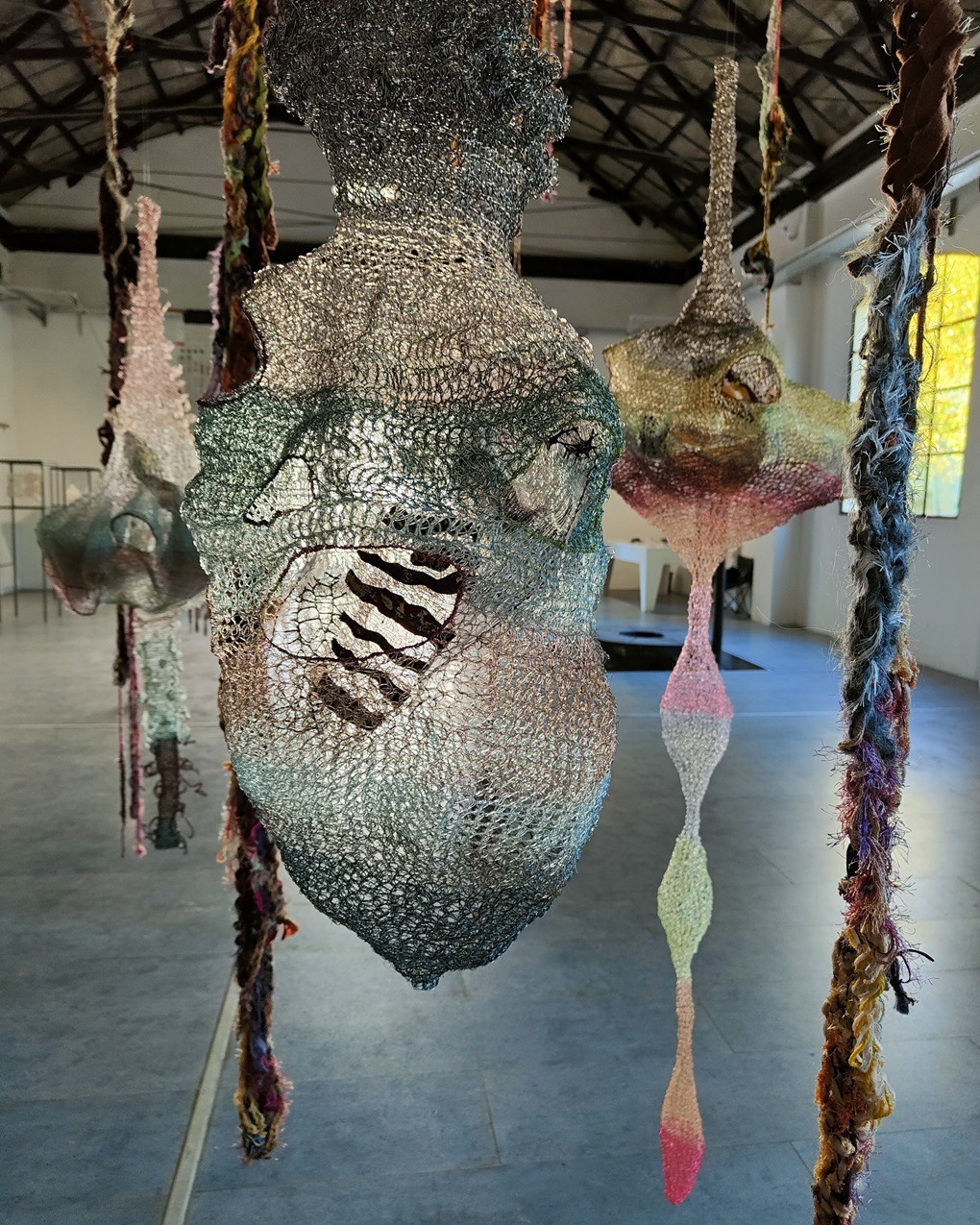
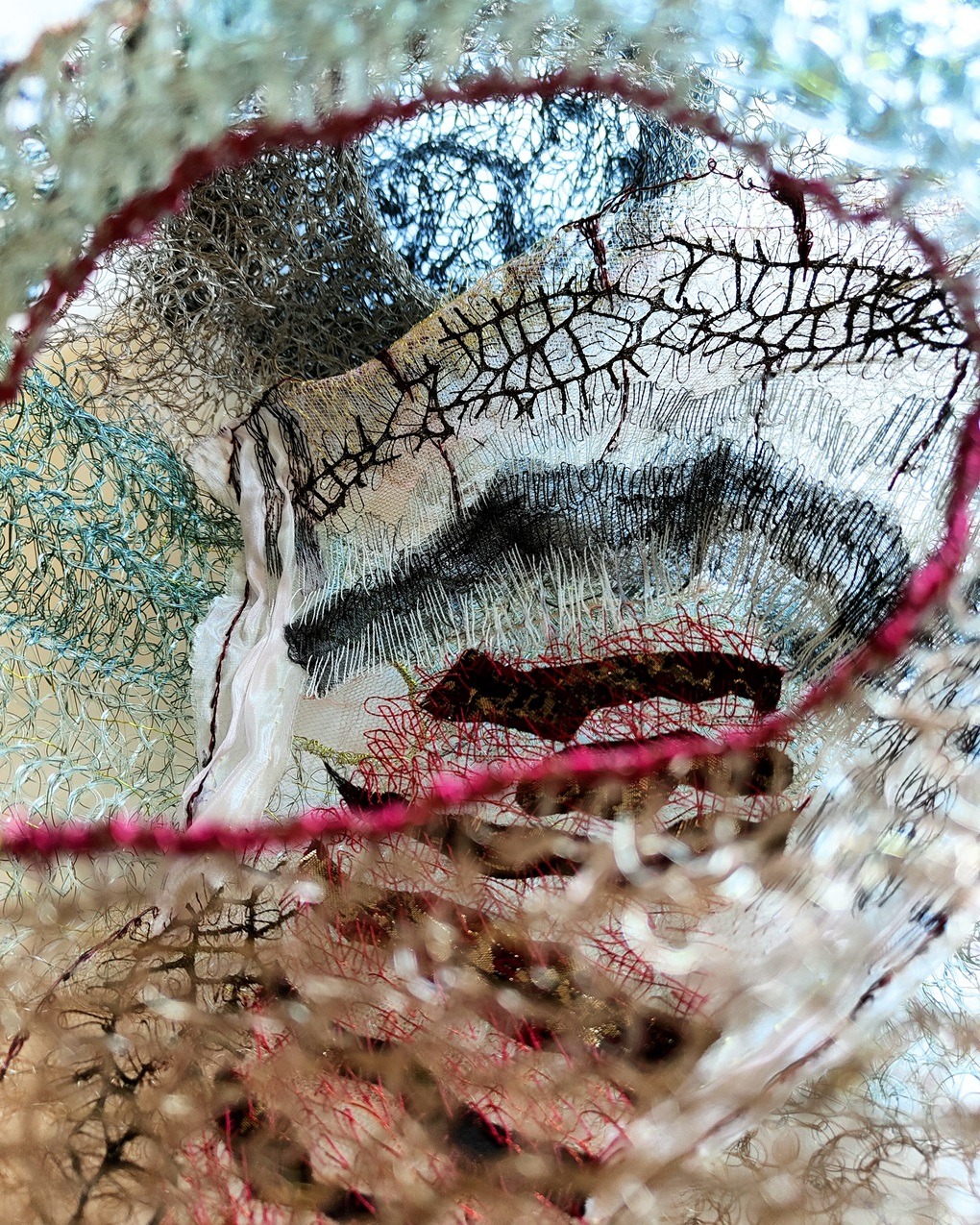
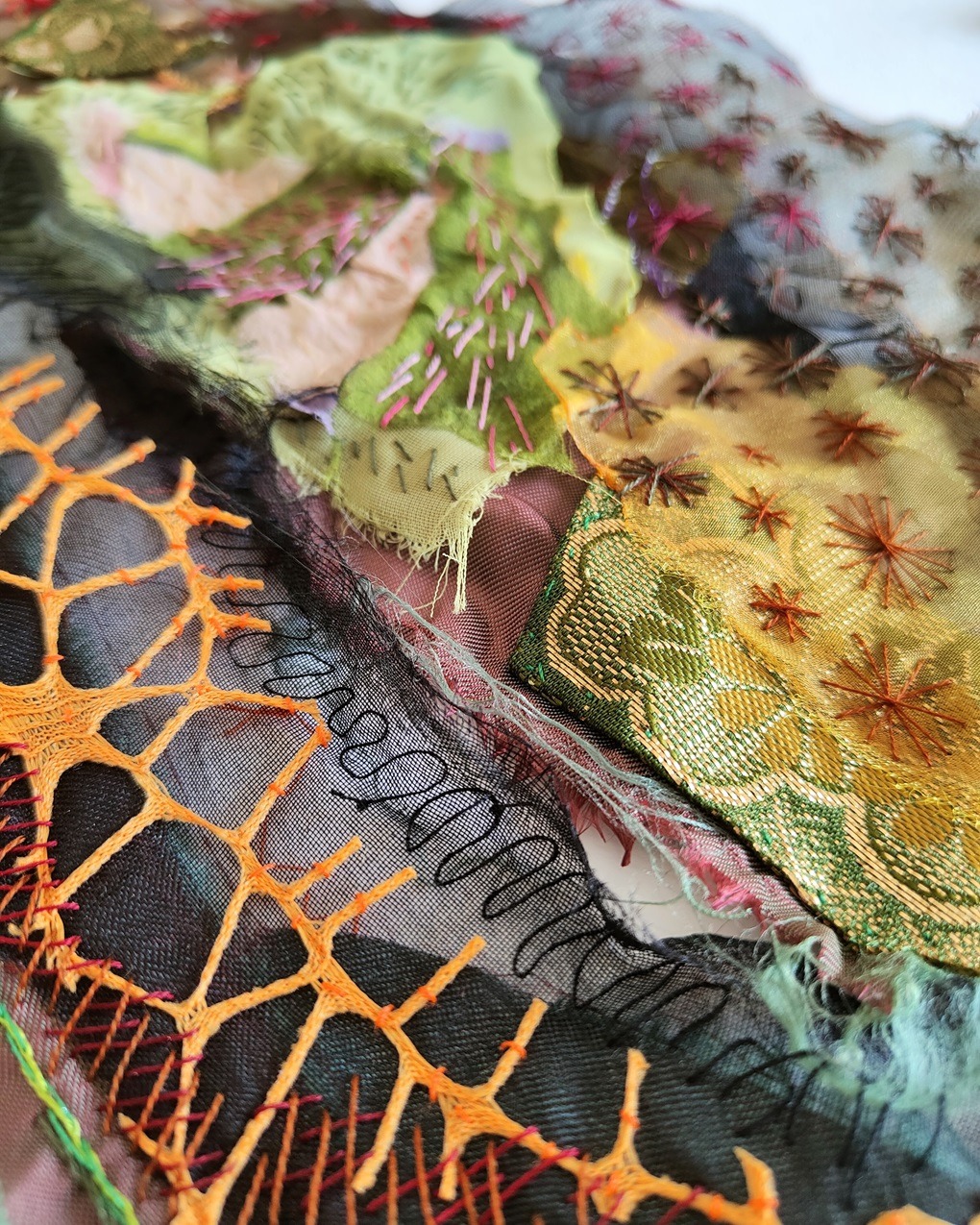
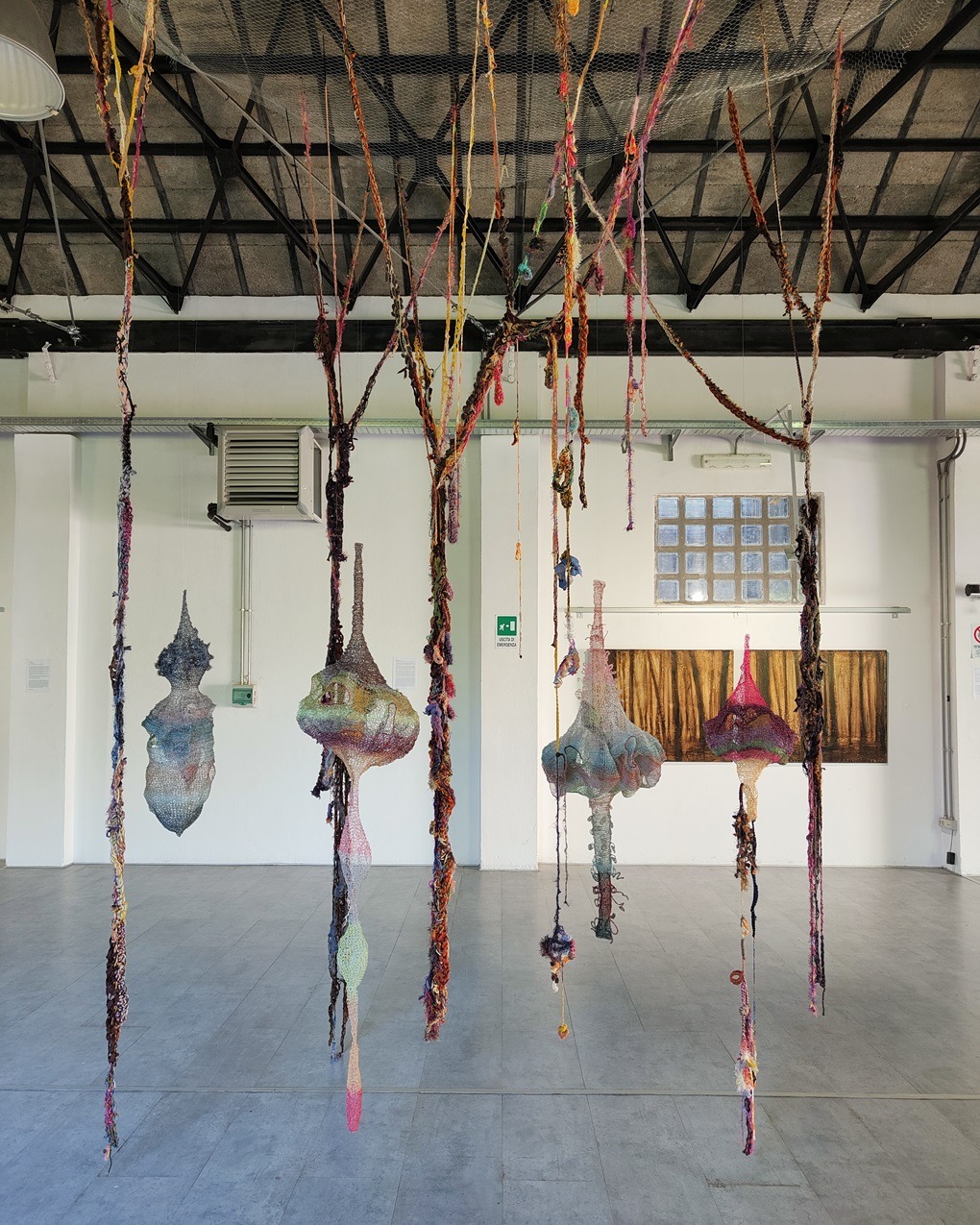
History and mythology
My specialism when studying at Moscow State University was Japanese Medieval Art. I’m also influenced by the graphic qualities of Japanese decorative paintings, the capacity of stylizing a natural object to make it look plain, and attention given to the rhythm of the lines. I also use lots of Japanese textiles, both modern and vintage.
Everybody asks me why I don’t live in Japan if I’m so enchanted with Japanese art. I guess I prefer to keep Japan as another magic dimension – one to enter occasionally, but definitely not to spoil with everyday life.
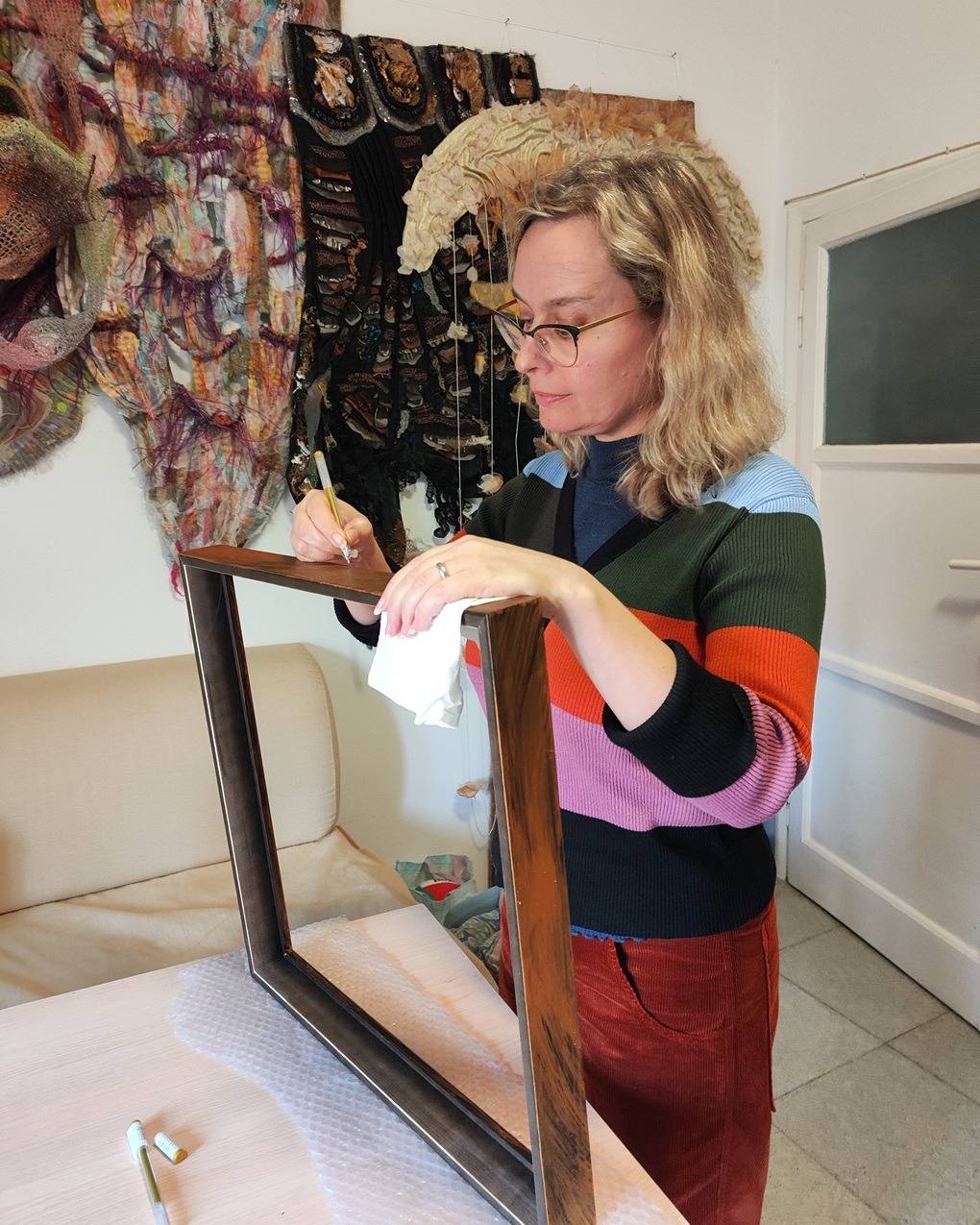
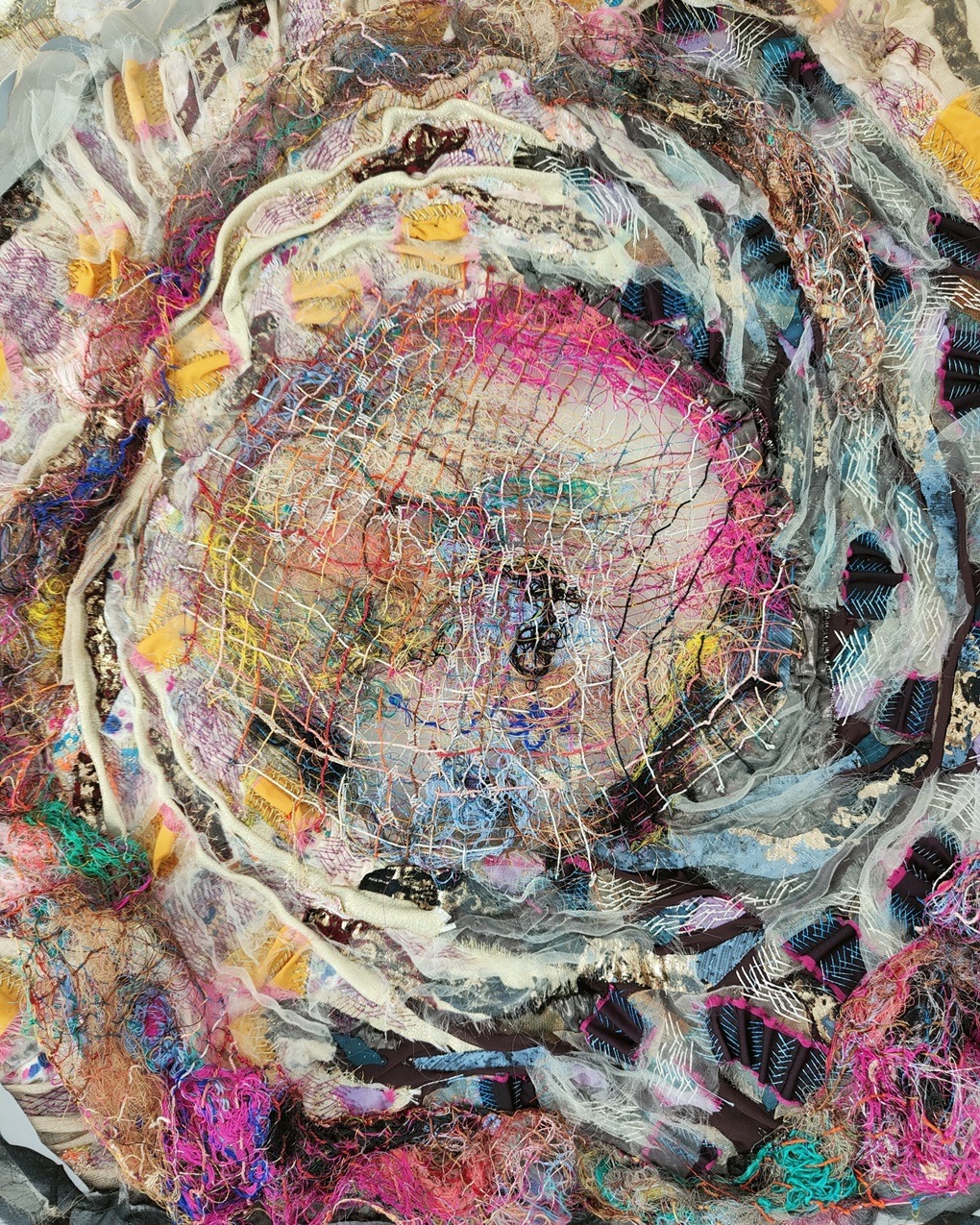
Roman influences
I came to Rome for the first time in 2007 and fell in love with the Eternal City. I moved here in 2008. Its Baroque aspect is dear to everything I do, with all of its theatricality, its drama of light and shadows, and its unbelievable perspectives in frescoes.
But I’m mostly connected to the history of this place – I’m talking about 3500 years ago when it wasn’t a city and not even yet a town. My series Realm on Rocks (a branch of the project Rocks. We Are Tender) is dedicated to the mythological kings, Pico the Woodpecker and Fauno the Wolf, as well as to the ancient deities Giano (Janus) and Terminus.
During my research for this series, I discovered that, somehow, ancient pre-Romans knew about the big bang theory, since the meaning of Janus is the starting point of the world that goes into expansion: it’s the beginning of time, of light and darkness. Pico is the embodiment of order, and Fauno is that of chaos – neither can exist without the other. It reminds me of Hegel’s philosophy, except these concepts were born around the 14th-13th centuries BC.
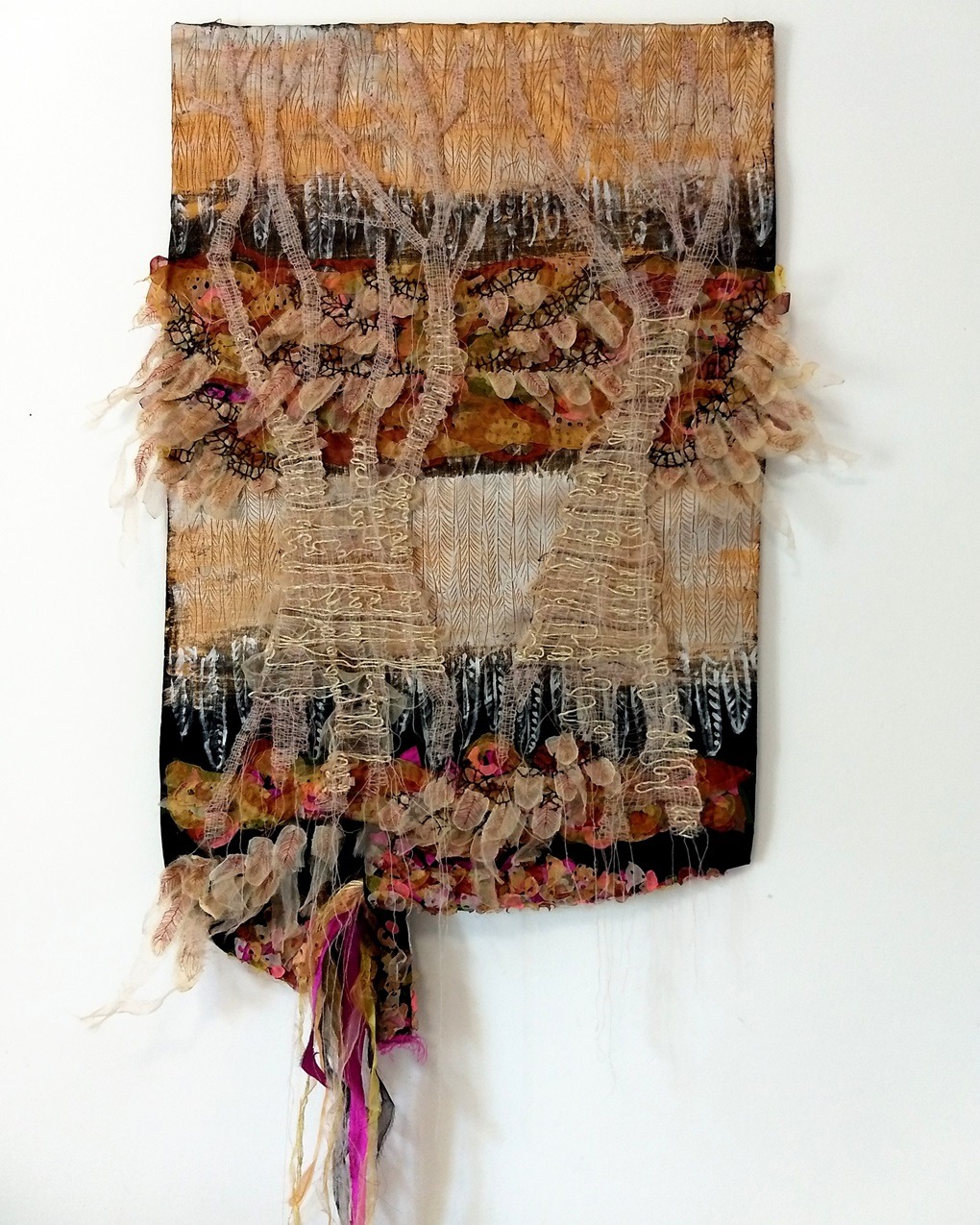
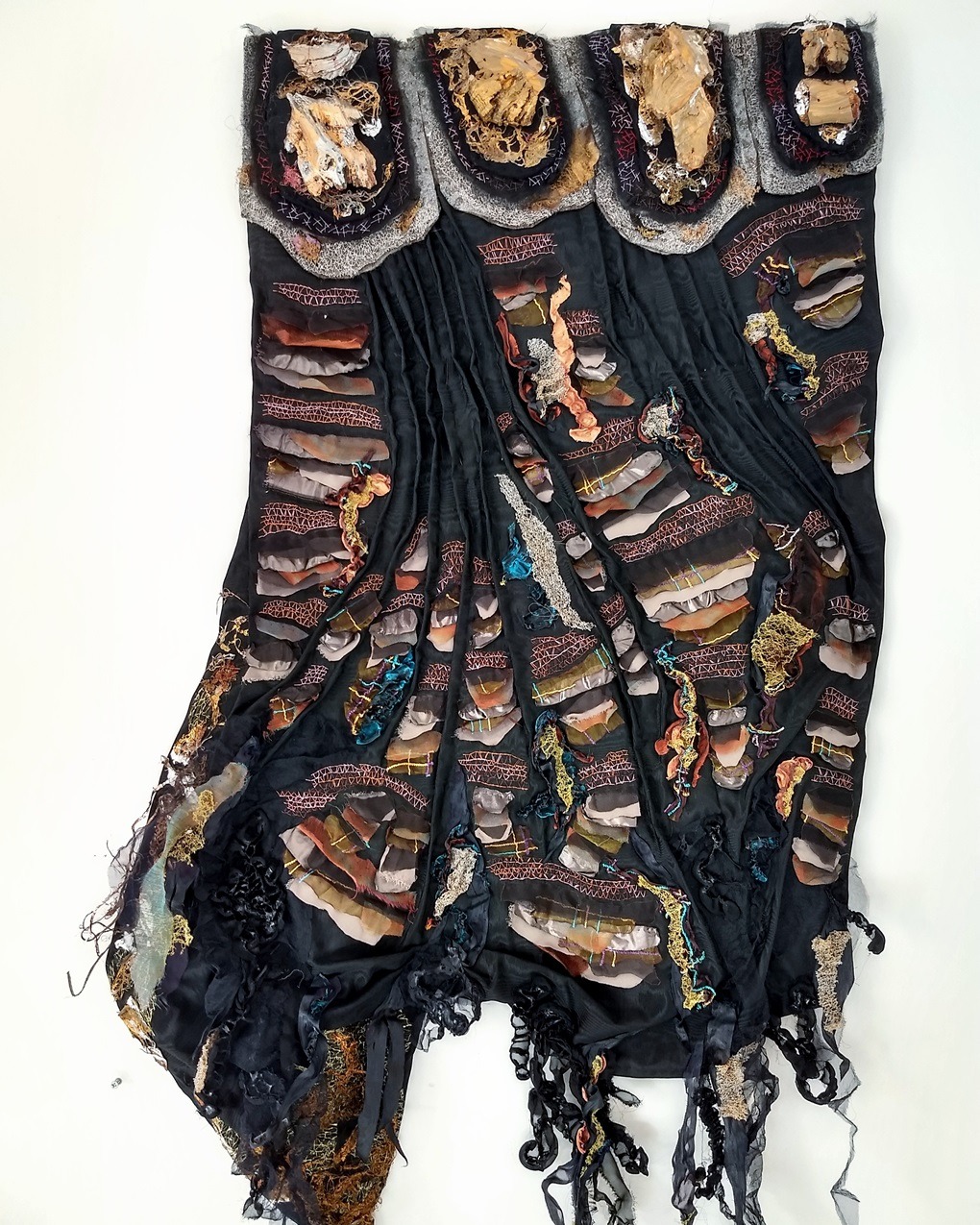
Other-worldly fantasy
An important influence on my work is a memory from my grandmother’s sister, who was practising ancient shamanistic rituals in the 1970s when I was a child. This episode, when I was four years old, was about a ‘guardian rock’ and it inspired my future installations.
There was a huge piece of rock at the edge of the wood, and the local kids told me it was a gate to the home of the guardian of the wood. They said if I didn’t behave well, the guardian would send a huge bear to take me away. I had only seen bears in Moscow Zoo, so when nobody was looking, I would go to the rock, delicately knock on it and say: ‘So sorry to disturb you, but I really want to see a bear. He must be so cute and fluffy! Please, please, please show me a bear!’. When I confessed my requests to my grandmother, she burst out laughing and told me: ‘Oh, but you’re such a good girl! He won’t send you a bear, not even if you ask him!’
“That experience of an object as a magic gate into a magical world has remained with me forever. And that’s why I try to create an atmosphere with this other-worldly dimension within my installations.”
I remember a fantastic episode during the Rome Art Rooms fair in 2019. I had mounted my Appearing/Disappearing installation inside a Ford van. It looked especially enchanting after sunset, since the interior of the van was black, and there were two theatre-like light devices that highlighted the shiny fishing thread that I’d used to crochet the trees.
One evening I saw a visitor slowly putting his arm inside the installation and then taking it out again. When I asked him what he was doing, he rewarded me with the reply: ‘Well, I thought if I put my arm into this other dimension it would transform somehow … and come out kind of green and furry.’
That was the best compliment I’ve ever had for my artwork!
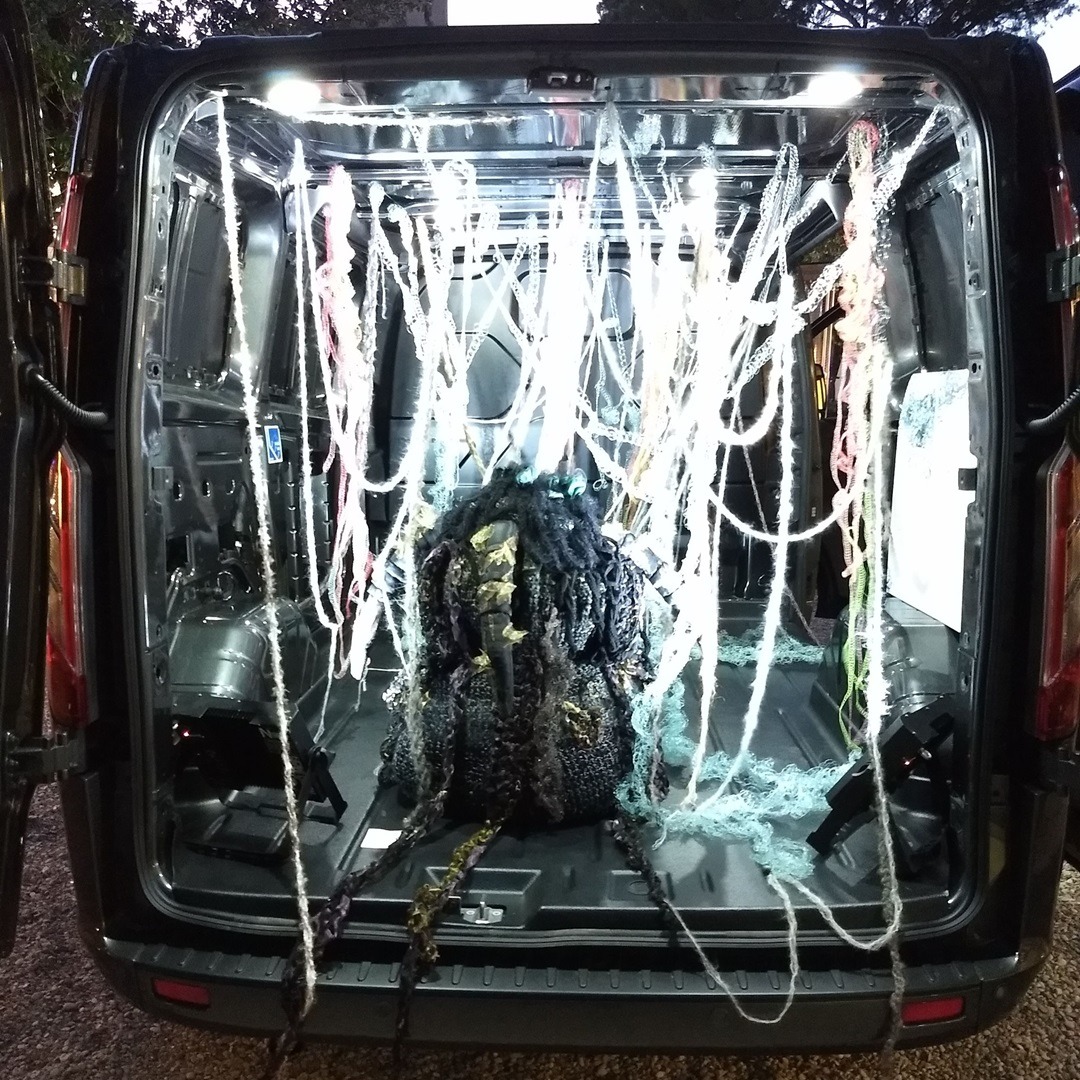
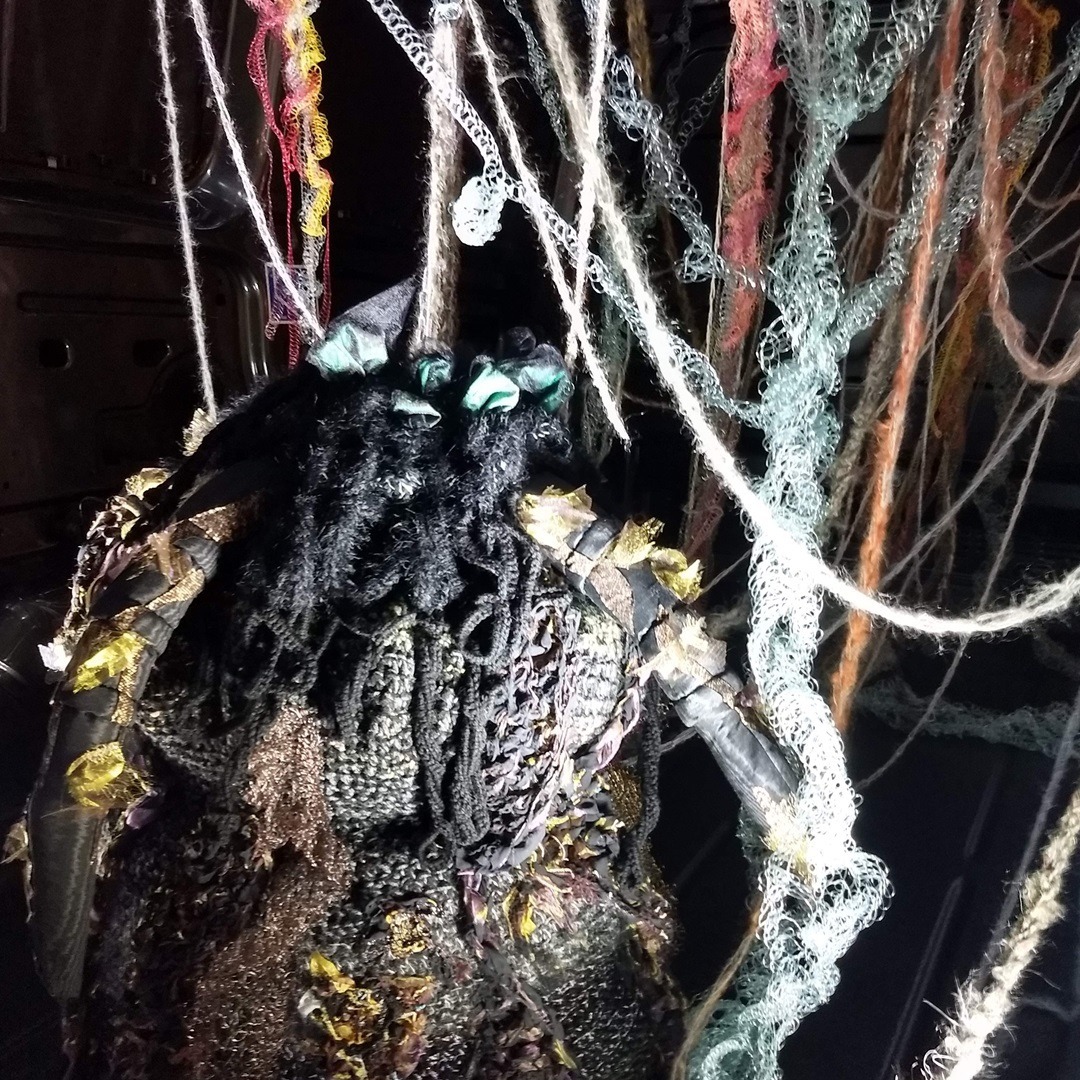
Creating complexity
I like complicated things. The world of our feelings, thoughts and emotions is composed of so many layers of shades. I believe this complexity is precious because it makes a whole universe of every person.
My artworks are multi-layered, often made of precious vintage fabrics. Every art piece is a one-of-a-kind experience: there would only have been one small piece of a rare silk or brocade, or a small amount of vintage thread or lace, that I had available to use.
In recent years, when I’ve talked to art critics or gallerists they’ve told me that people want simple things. I find this desire for simplicity hugely disappointing. It might be revolutionary during the postmodernist period, but I see it as a lack of desire to contemplate something here and now, to experience a moment or a work of art with undivided attention.
I remember a particular Renaissance art object, it was very elaborate, both intellectually and from the artisanal point of view. It was an artwork that had to be learnt about to be understood and fully appreciated. I’m afraid we’ve lost this need for quality of depth in an art object.
Interactive playground
“My installations are meant to be a kind of playground for grown-ups, a space where one can abandon his or her seriousness and social status, and feel like Alice in Wonderland.”
My main field of work is textile and fibre installations. I try to create an atmosphere that invites people to interact with these art objects, but people often come to shows believing they can’t touch a work of art and therefore need encouragement to do so.
During art shows, I’m always available to talk to the visitors about ideas behind my installations and sculptures, and I notice the difference in reaction between those who listen to my explanation and those who don’t, saying ‘No thank you, I’m sure the art speaks for itself’.
I accept their purely visual interaction with an art piece, but I feel the more you learn, the more you see. That’s why I like to learn more about spheres of art that are totally different from what I do, such as the performance art of Marina Abramovich or minimalism of Donald Judd. Learning about something that is totally at odds with your own vision and point of view helps to develop new visions of art, and those of other people.
“Textiles are such a rich material and they permit me to express being multi-layered and complex to the maximum.”
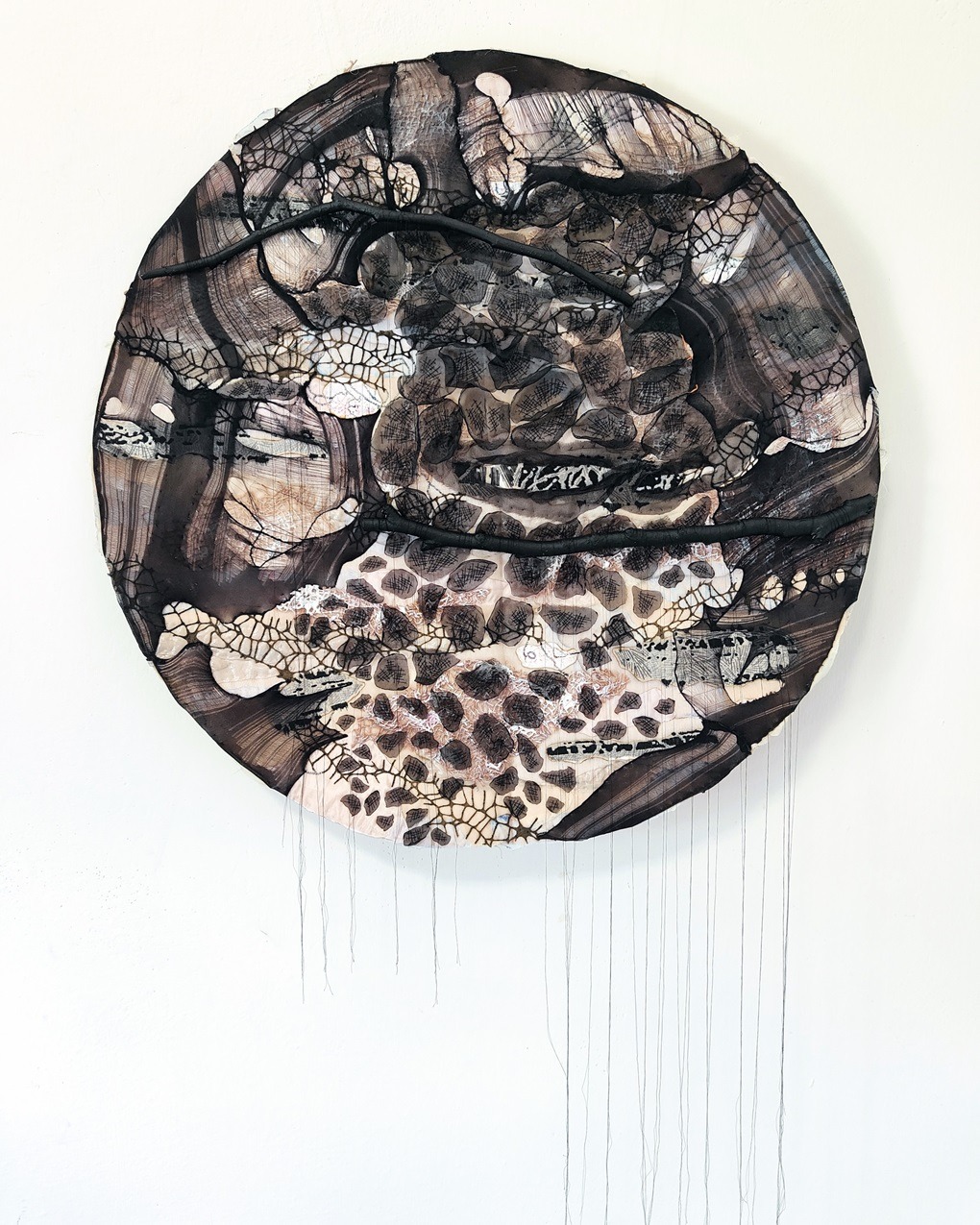
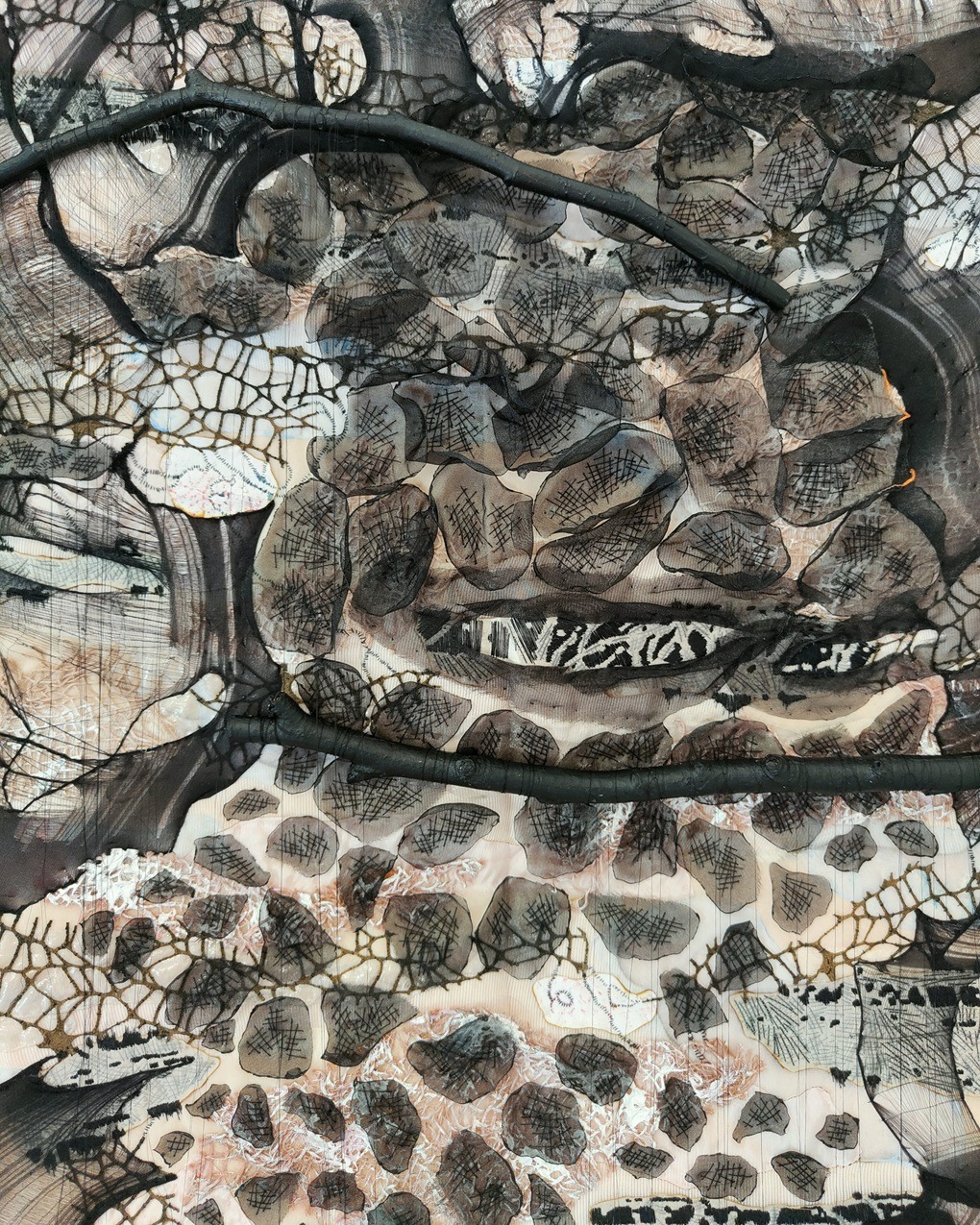
Favourite Project
It’s so hard to say which project is my favourite. I was told I shouldn’t see my artworks as children, but so far that’s beyond me. Every ‘child’ is my favourite. But, if I had to choose, I would say it’s the Hidden Treasures installation. It consists of crocheted cocoons of various shapes and colours, each with some holes in it. They are hanging from the ceiling, and visitors are free to hug every cocoon, to find the best hole to look inside to discover where a hand-embroidered butterfly wing is hidden.
I love this project because it’s so much fun to see people who are hugging the cocoons, looking inside and letting themselves go, just like little kids in search of their tiny treasures. I love it because it’s so life-affirming.
This installation is born out of child’s play. When I was a girl on summer vacations at my grandmother’s, my friends and I would put items like a butterfly wing, a beautiful dry petal, a hair clip lost by who-knows-who (but surely a fairy!), and other such treasures, in an empty metal confectionery box.
We would bury the box of treasures in the garden that surrounded our apartment block, with the intention of digging it up the year after. But I never did manage to find my treasures, however much I dug to find them. They’re a faint memory now, together with my grandmother’s face, the light in her house, and the smell of cakes she would cook for me. Something full of both joy and melancholy all at the same time.
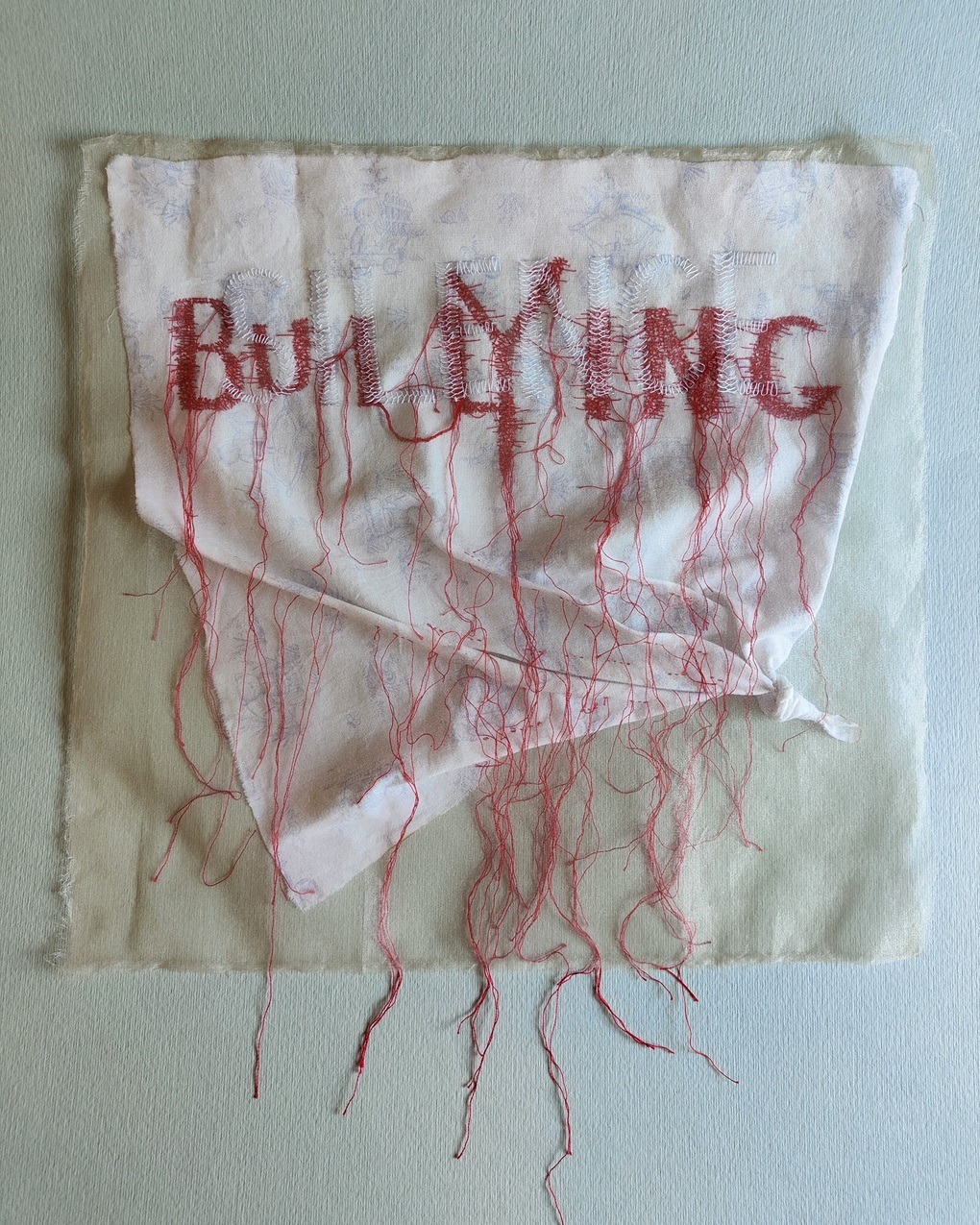
A personal response
I have a deep respect for artists who dedicate themselves to the battle for human rights, but I’m not an art activist myself; I belong to a world of dreams and deities. However, as an exception, I created Silence Covers Violence. It was in response to the FORGETME(K)NOT group show at the Museum of Embroidery and Textiles at Valtopina, a show dedicated to the neglected rights of women.
I learnt about this project while my daughter was fighting back against bullying by two of her female classmates. What struck me most was the silence of kids who were ashamed to talk to their parents, the silence of the parents who knew, and the silence of the teachers who dismissed it, saying that happens among girls. I found it incredible: 15 kids felt uncomfortable at school and everybody was silencing the problem.
Silence Covers Violence consists of a thin transparent chiffon with the word SILENCE embroidered on it, mounted on top of BULLYING embroidered in red threads. The red letters are shouting from beneath the top layer, just as the real life trauma of bullying can’t be hidden by pretending nothing is happening.
On rare occasions, I do integrate some personal experiences into a more abstract project. For example, the series Rocks. We Are Tender was born in the last months of 2020 after I heard the post-Covid stories from my relatives and friends all around the world. They were stories of the fear of getting ill and the fear of being locked in at home, stories of uncertainty for the future and stories of hope.
I saw my dear people as rocks that managed to resist that stress, but those rocks were so fragile, so tender. The series was born out of that personal emotion, but from a formal point of view the artworks are inspired by the colours and textures of minerals and rocks that I photographed in different regions of Italy.
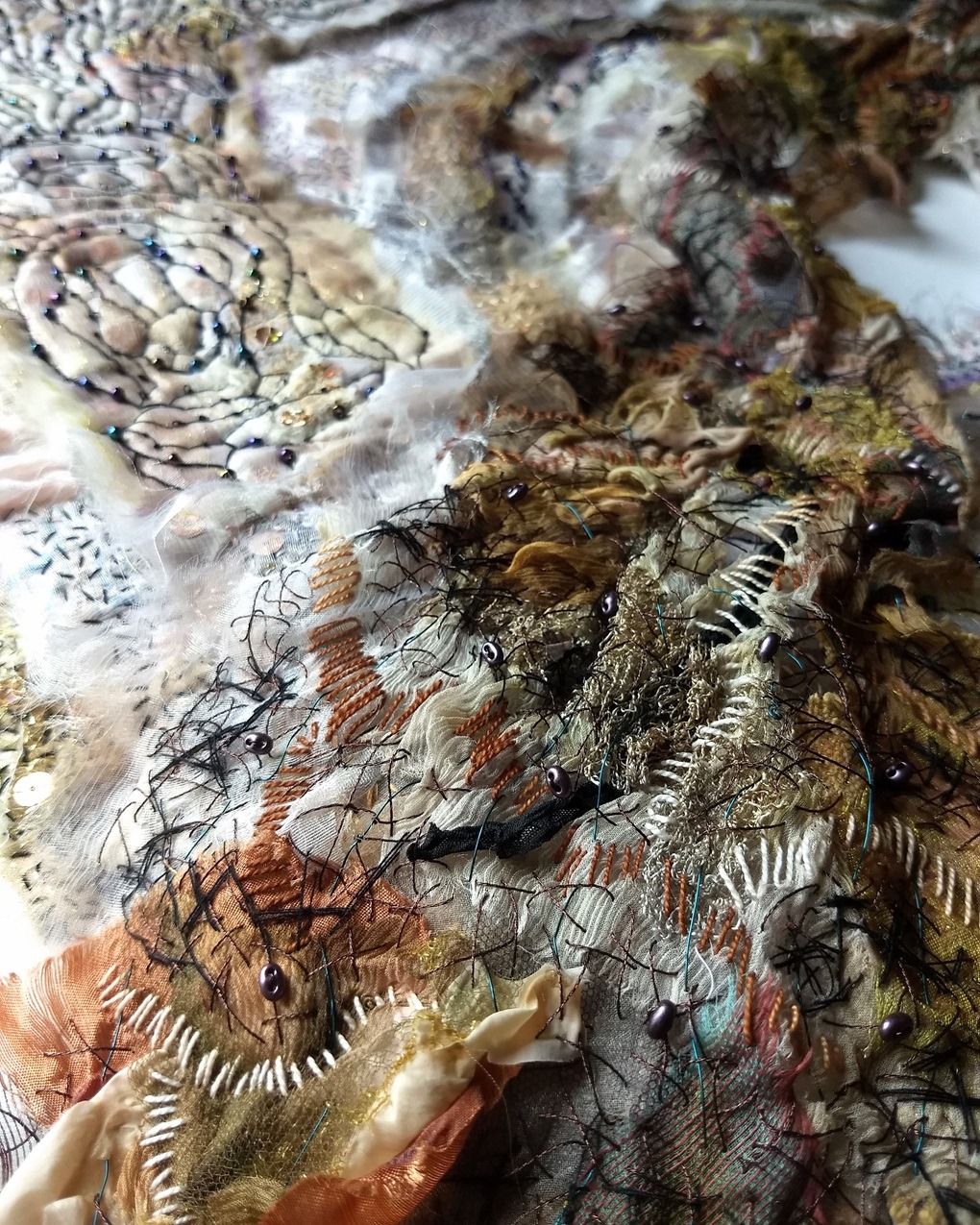
A taste of curating
I’m a member of the Society for Embroidered Work (SEW) and was honoured to participate in their first international show in London in 2019. Their second show was held in Rome in 2021, and I was one of the three curators. I graduated as an art historian and studied curating, so I was curious to see what would come out of that new art experience.
I proposed the theme Surface and Depth since people mostly imagine a decorative surface when they hear of embroidery. So I asked our artists to submit either 3D projects or interesting examples of surface design in embroidery. All three curators were amazed by the outcome. We had sculptures, installations and various draped artworks – even an embroidered paint brush and an embroidery panel made from an aluminium can. The show was a huge success with people coming to explore the infinite possibilities of contemporary embroidery and textile art.
For that show, I started Hidden Treasures. It’s my most important installation to date and one I’m continuing to work on.
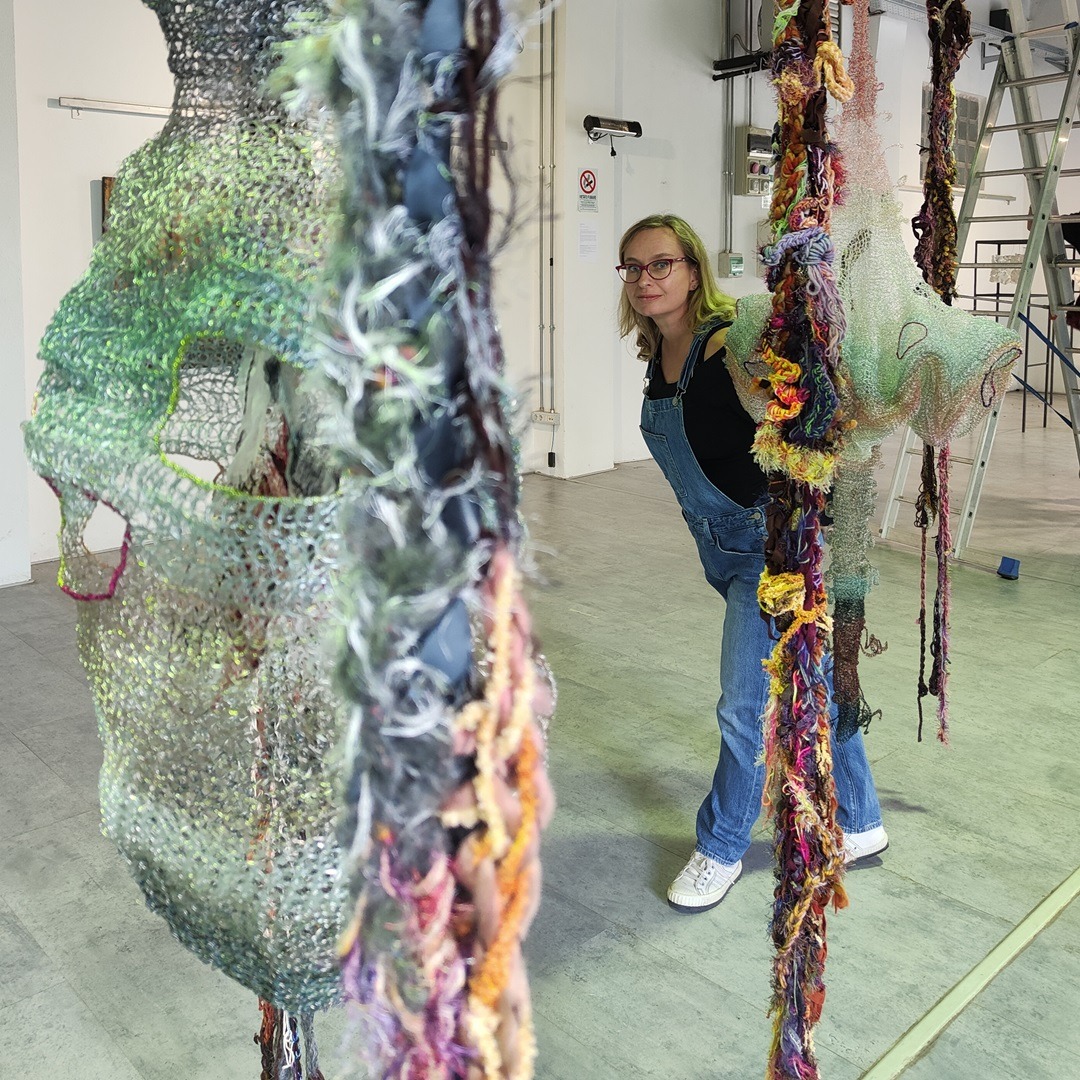
Future plans
I’m fortunate to have been brought up in a family that comprised six different ethnicities and four different religions. But I’m afraid there’s a lot of misunderstanding and violence towards people of other cultures because of a lack of learning about them. It’s the same with art.
In 2022, I was supposed to take part in a group show in Paris, and I was supposed to have a personal show in Amsterdam and many group projects in Italy. When the military operation in Ukraine broke out, that same day I got many emails and phone calls from gallerists and curators. Basically, everybody was saying the same thing: ‘I appreciate your work so much, but you are Russian and I’m afraid to exhibit you’.
I’ve experienced scenes like arriving at my local shop only to be greeted with shouting: ‘Out, out, no Russians here!’. I’ve experienced the partial blocking of my bank account because I was Russian, and it took a few months to unblock it. I didn’t feel like making any plans after that.
As an artist and as a person, I’m for life, because it’s the highest gift a human being has. Every life is precious and it’s my wish that people would appreciate that more. Respect for another’s life has to be a personal choice for each of us.
“I just know one thing: I’m an artist, art is my life, and I will go on with my work. I’m working on Hidden Treasures, also working on the second piece of a new series inspired by the shamanistic shields, and I’m already planning the next series after that.”
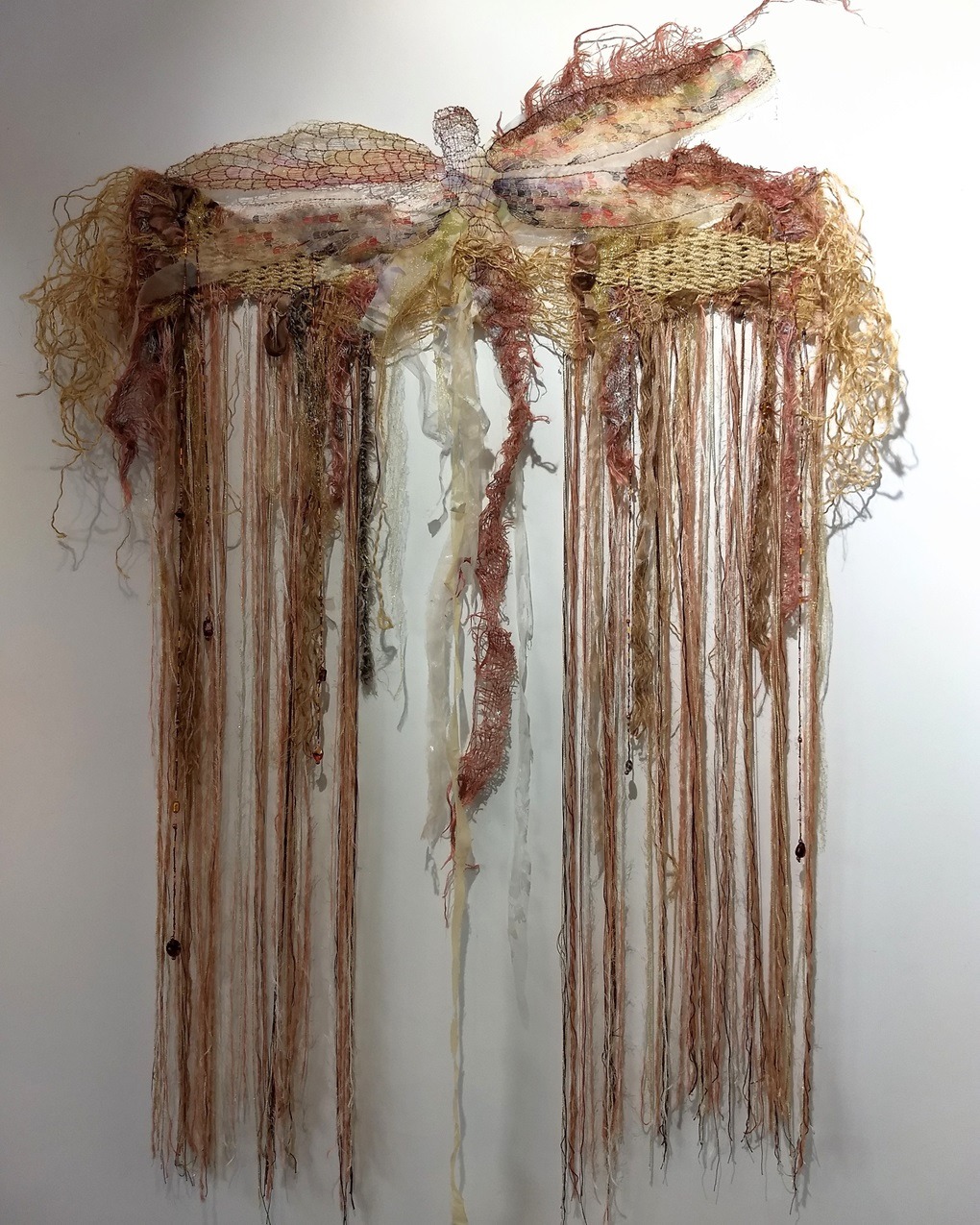
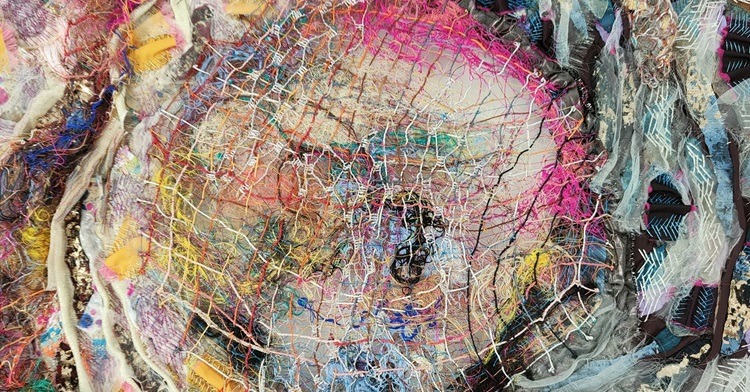

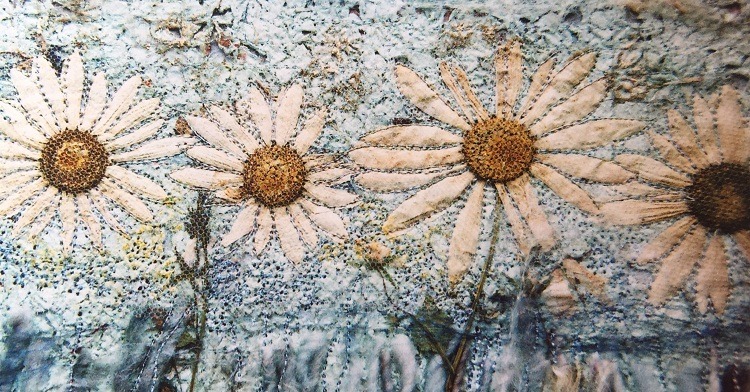
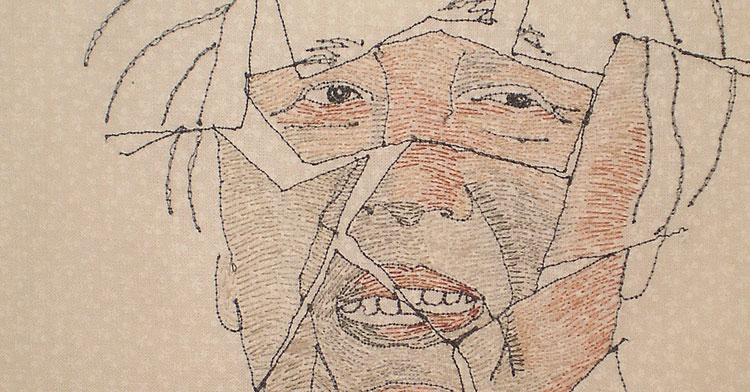
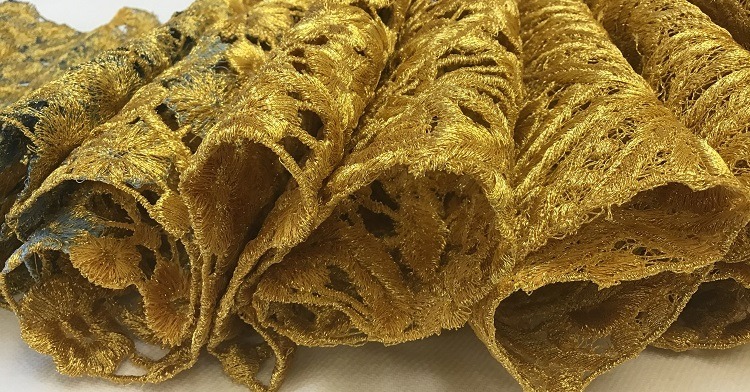
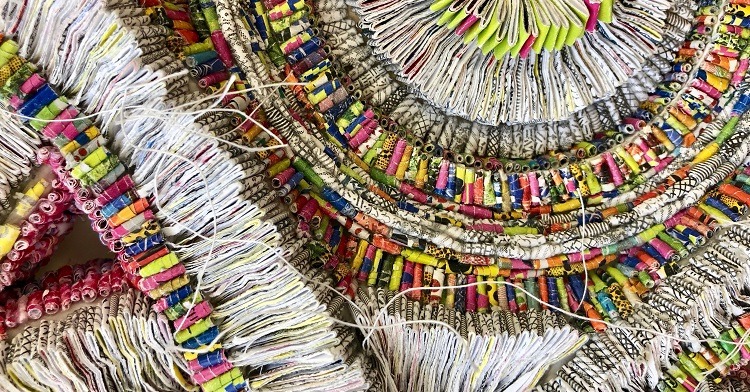
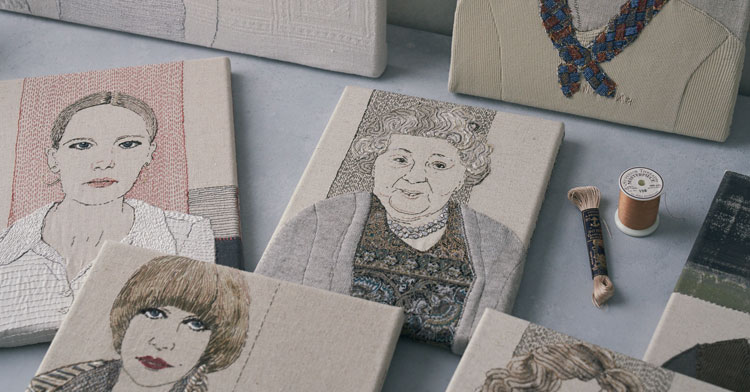
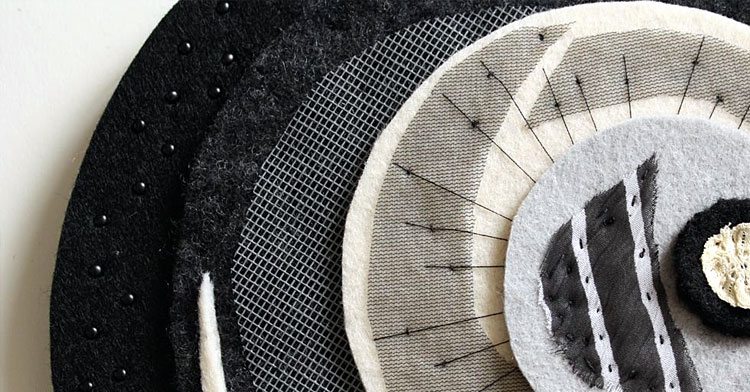
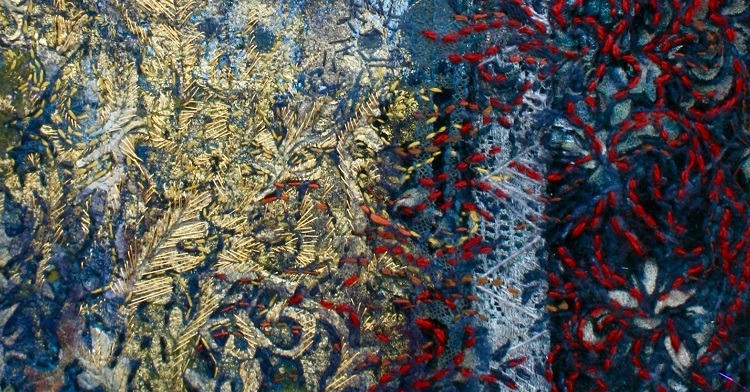
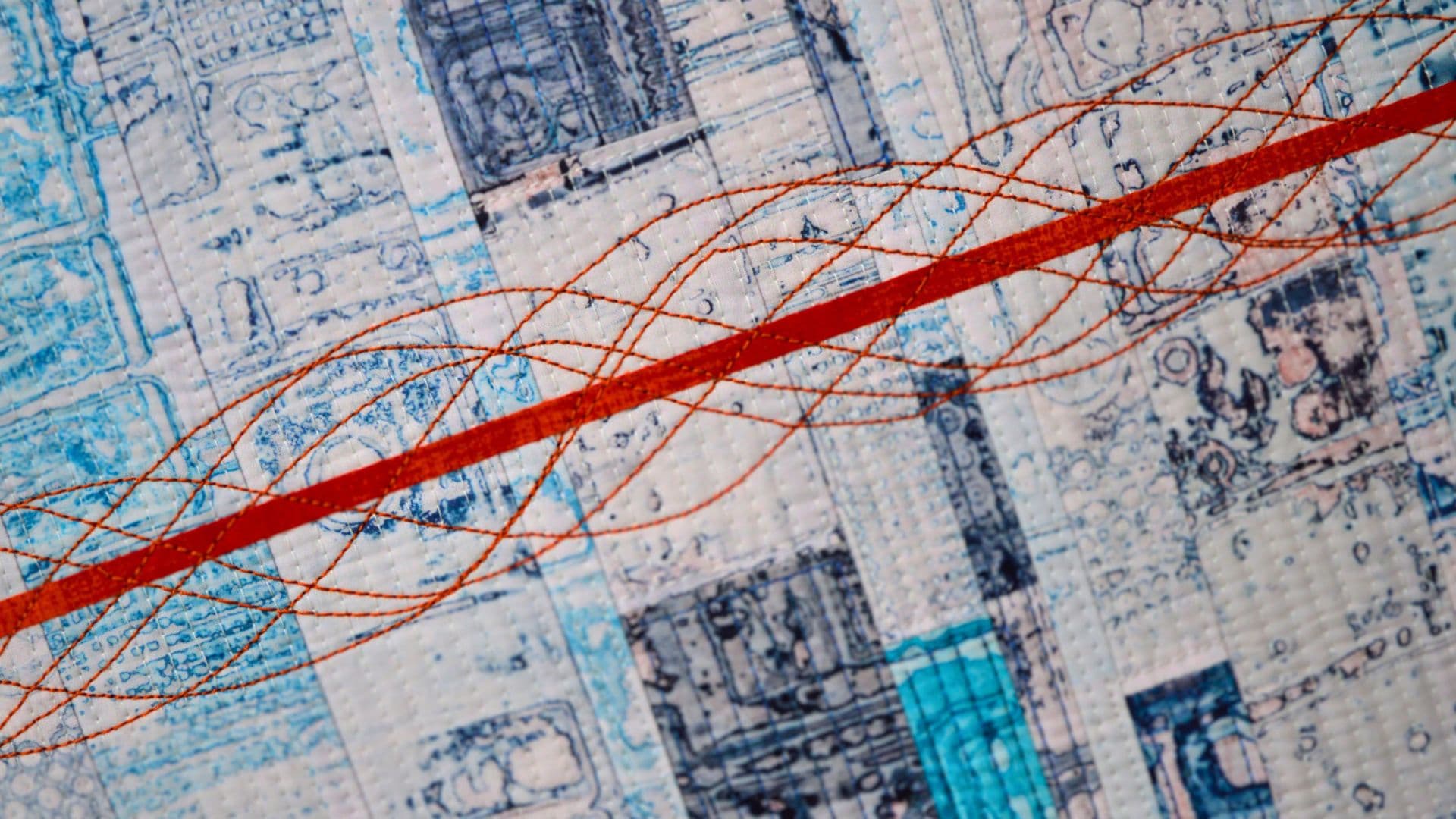
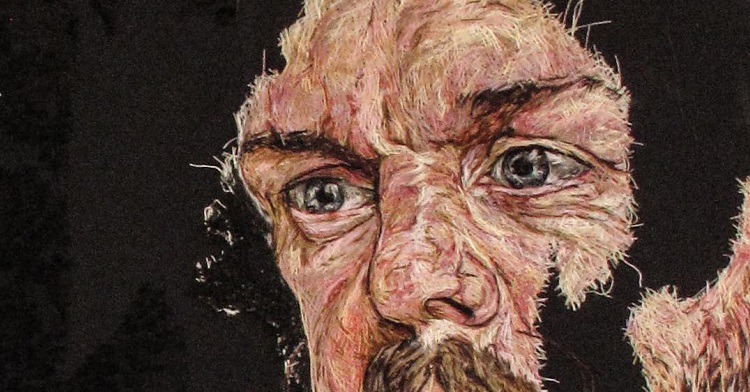
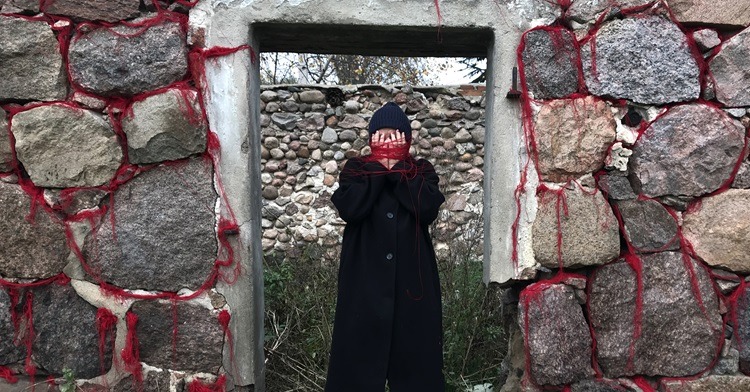
9 comments
Claudia Vega
Really enjoyed reading this article. I am already following you at Instagram!
The way you use the material to create such delightful pieces inspire me as I use remnant material and follow my heart while picking here and there. I also think touching art can improve summerging into another fantasy world or being able to connect with what is being expressed, especially for disabled persons.
Would be glad to meet you in person someday when I travel to Europe.
Cherry Jeffs
Very inspiring work! But I’m so disappointed to hear of the ‘cancelling’ and abuse Olga has received due to her Russian origins. We need to stop blaming individuals for what governments do. There are good, blameless people in every society and we should have the decency to presume innocence until proven otherwise.
Olga
Dear Cherry, thank you so much for your kind words… I’m still working out the psychological consequences of that weird “no Russians please” that came out two years ago. I suppose many people who did that were perceiving it like a gesture of solidarity with the Ukrainians. So many situations (not only tragic and giant ones, like wars) tend to be seen like a videogame, “here are the good, there are the bad”… No shades, no reflections, and, what is worse, people start loosing the perception of an individual human being against that background of “they are all good/they are all bad”. I suppose what I’m trying to do as an artist is to remind to people that everyone of us is a world in his or her own, precious, multilayered, fragile… individual.
Olga
Thank you so much, Suzy!
Cornelia
Very impressive and inspiring. AND you are allowed to touch!!
Thank you.
Olga
Thank you! Textile art really welcomes to touch, doesn’t it? And I like the idea that people can interact with contemporary art, actually that’s why it’s contemporary, because we literally can live it with our bodies ☺️☺️
Suzy
Awesome work!!!!
Mary Helen Fernandez Stewart
Stunningly beautiful layers of colors and textures.
Olga
Thank you so much for your kind words! ☺️